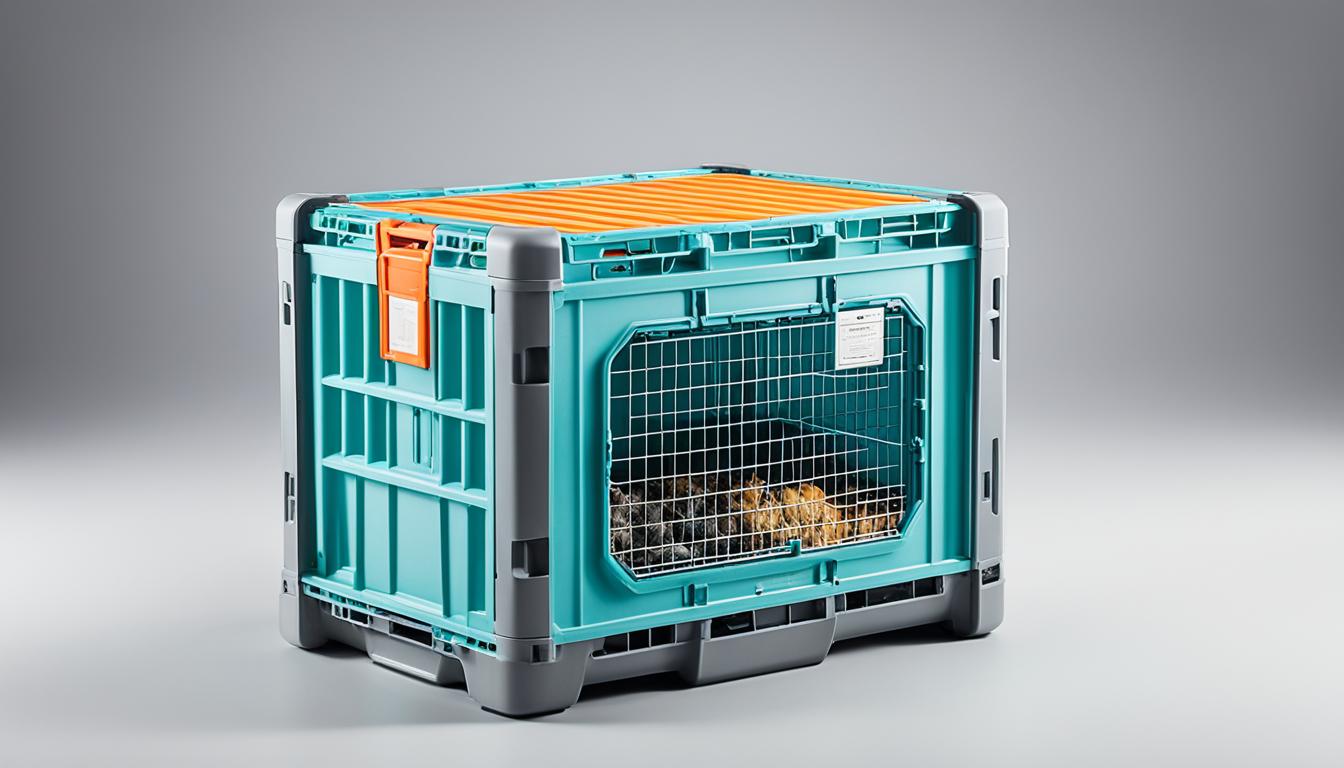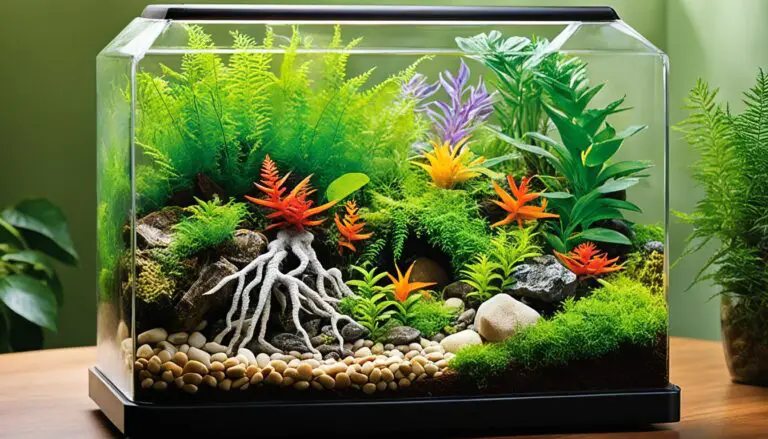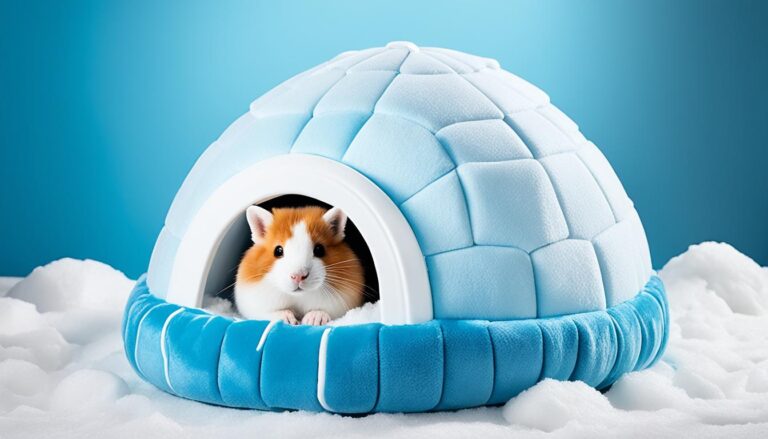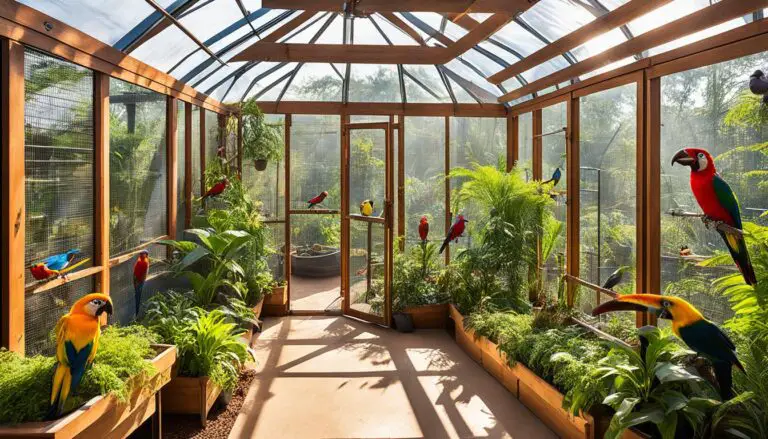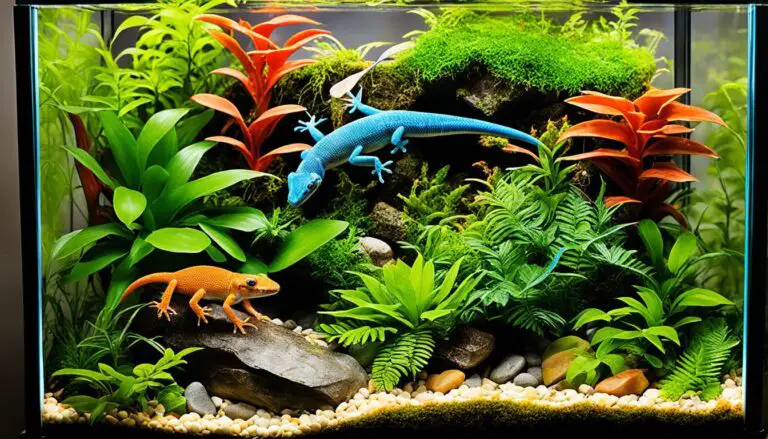Safe Exotic Pet Housing Transport Solutions & Tips
Did you know millions of exotic pets are moved around the world every year?
Moving an exotic pet can seem scary. But, with the right tips and preparation, you can make their journey safe and comfy. Whether you’re moving to a new city or taking a trip, it’s key to have a secure travel space for your exotic pet.
In this article, we’ll dive into how to transport exotic pets safely. This includes looking into rules and regulations, making a safe travel area, reducing stress, and helping them get used to new places. By following these steps, you and your exotic pet can have a smooth move.
Key Takeaways:
- Research the rules and regulations for transporting exotic pets to ensure compliance.
- Invest in a suitable pet travel carrier or container that meets your exotic pet’s needs.
- Create a safe travel environment by providing proper ventilation and including bedding, food, and water in the carrier.
- Minimize stress by maintaining a consistent routine and considering shorter distances for transport.
- Allow your exotic pet ample time to adjust to their new surroundings and provide comfort and reassurance.
Researching Rules and Regulations for Exotic Pet Transport
Moving with your exotic pet means following specific rules for their transport. Whether moving to a new state or country, you must comply with local laws. This ensures a legal and smooth journey for your pet.
Start by figuring out what your pet needs for the move. Look into permits or certificates required for them. You might need to talk to local agencies, vets, or animal control to get this info.
Transportation cages for pets must meet official standards. They should be safe and comfortable for your exotic pet during the trip. It’s important to choose carriers that fulfill these specifications for your pet’s safety.
Think about more than just legal needs when moving your pet. Consider your new home’s climate to make sure it’s right for your pet. Some pets need certain temperatures or humidity levels to feel comfortable.
“Understanding and following the transport rules for exotic pets is vital. It ensures a smooth move for you and your pet. Following these rules shows you care about your pet’s well-being.”
Research well and stick to all rules for moving your pet. This way, you’ll feel confident about the trip. Being prepared is key to keeping your exotic pet safe and happy.

Permits and Certificates for Exotic Pet Transport
| Animal Type | Permits or Certificates Required |
|---|---|
| Reptiles and Amphibians | Permit from the Department of Fish and Wildlife |
| Small Mammals | Certificate of Veterinary Inspection |
| Birds | Import/Export Licenses |
| Primates | Special Permits from USDA |
| Big Cats | Captive Wildlife Permit |
Creating a Safe Travel Environment for Exotic Pets
When moving exotic pets, their safety and comfort is crucial. You must create a safe travel space that meets their needs. Here are key tips:
- Choose the right travel container: A travel crate for exotic animals should have good airflow and space for your pet to move. It also needs to be sturdy to stop escapes during transport.
- Add bedding, food, and water: Place comfy bedding in the carrier for a cozy spot. Also, bring enough food and water for the entire trip. This keeps them hydrated and healthy.
- Make sure there’s enough air: Good ventilation in the carrier prevents overheating or lack of air. Keep it out of direct sunlight and away from heat sources to control temperature.
- Keep the carrier secure: Fasten the carrier well during travel. This prevents it from moving around. It keeps your pet safe and the carrier stable.
To ensure your exotic pet’s safety, follow these steps. Get them used to the carrier by introducing it early. Adding toys or blankets they know can also ease their stress during the trip.
Expert Tips for Exotic Pet Travel:
“Pick a carrier that suits your pet’s special needs. Some might need extra items like heat lamps or UVB lights. Talk to a vet or a pet expert to make sure you have all you need for a smooth trip.”
Watch your pet closely during the trip for any stress signs. If they seem upset or uncomfortable, act quickly to help them. By doing these things, you make sure your exotic pet travels safely and calmly to their new home.

Minimizing Stress and Allowing for Adjustment
Moving can make pets stressed, and this includes exotic animals. It’s important to reduce your pet’s stress when moving. Keep their routine the same as much as possible. This creates a familiar feeling and lowers anxiety. If you can, transport your exotic pet in your car. This cuts down on their time in a carrier and makes travel better.
When you get to your new place, give your exotic pet time to get used to it. Slowly introduce them to their new home. Give them familiar things like their old bedding or toys. These items make them feel safe and help them settle faster.
Providing Comfort and Reassurance
It’s key to make your exotic pet feel comfortable and reassured during this time. Spend time with them and show gentle affection. Use calm voices and positive words. Building trust and a feeling of security reduces their stress and helps them relax.
Remember, each exotic pet is different, and they adjust in their own time. Being patient and understanding is crucial in making them feel secure in their new home.
To make moving easier for your exotic pet, reduce their stress and help them adjust. Think about their needs and use the best carriers for travel. Secure and comfortable carriers ensure their safety on the trip. With care and consideration, moving can be a good experience for your exotic pets.
Conclusion
Moving with exotic pets needs careful planning. You must do your research and create a safe travel environment. This helps minimize stress for your pets.
Preparing your new home and allowing time for adjustment is key. This will ensure a safe and comfy journey for your beloved exotic pets.
Think about getting specialized housing for them. Transporting exotic pets or custom pet crates can meet their unique transport needs. These provide necessary space, ventilation, and security.
This keeps your exotic pets safe during the journey. With good preparations and careful attention, moving can be positive. Always prioritize their well-being by providing the proper housing.
Give them the time and care they need to adjust. Sure, moving with exotic pets can be challenging. But, with the right info and resources, you can make it smooth and stress-free.
FAQ
Do I need to research any rules or regulations before transporting my exotic pet?
What should I look for in a travel carrier or container for my exotic pet?
How can I minimize stress for my exotic pet during transport?
Are there any top-rated exotic pet carriers that can help with transportation?
What is the importance of specialized housing or custom pet crates for transporting exotic pets?
Source Links
- https://caddymoving.com/blogs/caddy-shack-blog/how-to-move-exotic-pets
- https://www.boltonvet.com/tips-for-exotic-pet-care/
- https://prioritymovingservices.com/moving-blog/moving-with-exotic-pets/
Peter Stones is the founder of Exotic Pets Place, the leading online resource for exotic pet care information.
With over 10 years of hands-on exotic pet ownership experience, he is deeply passionate about sharing his expertise to help others properly care for their unusual pets.
When he's not writing extensively researched articles or connecting with fellow exotic pet enthusiasts worldwide, you can find Peter at home tending to his own beloved menagerie of exotic animals.

